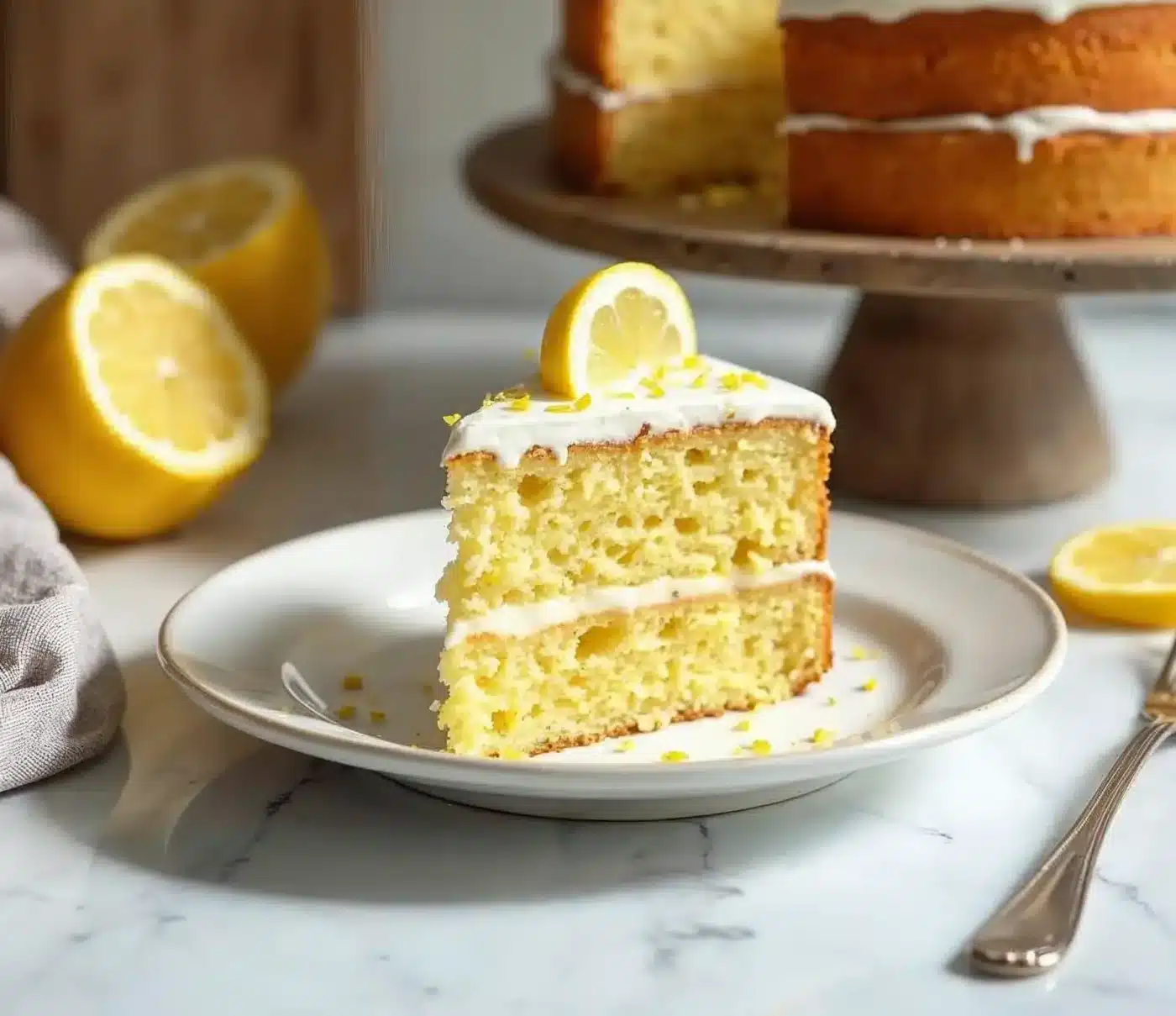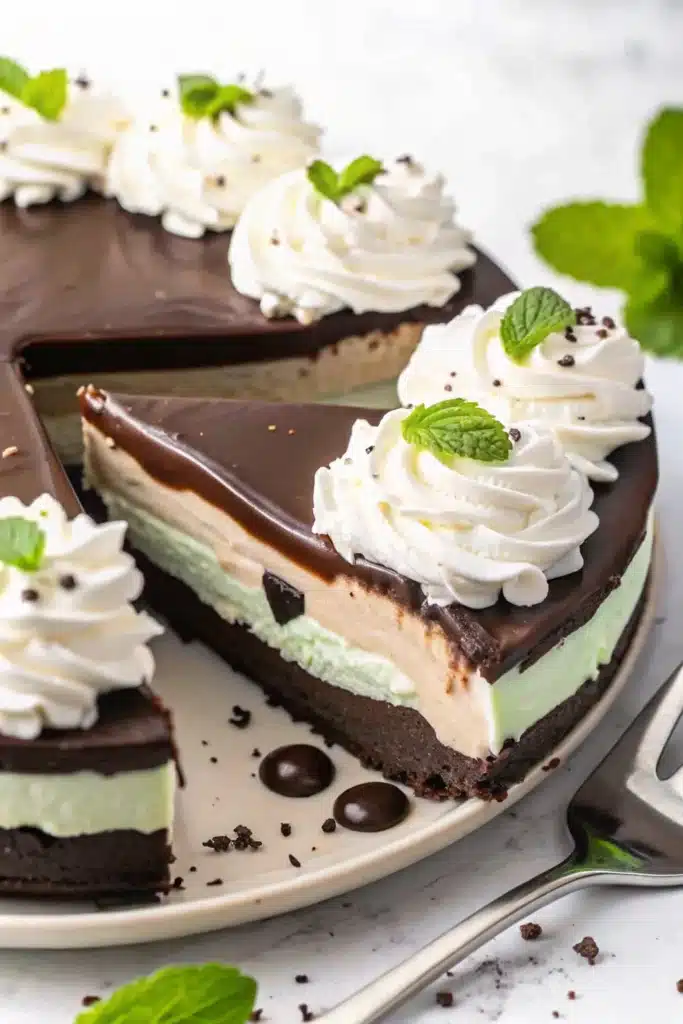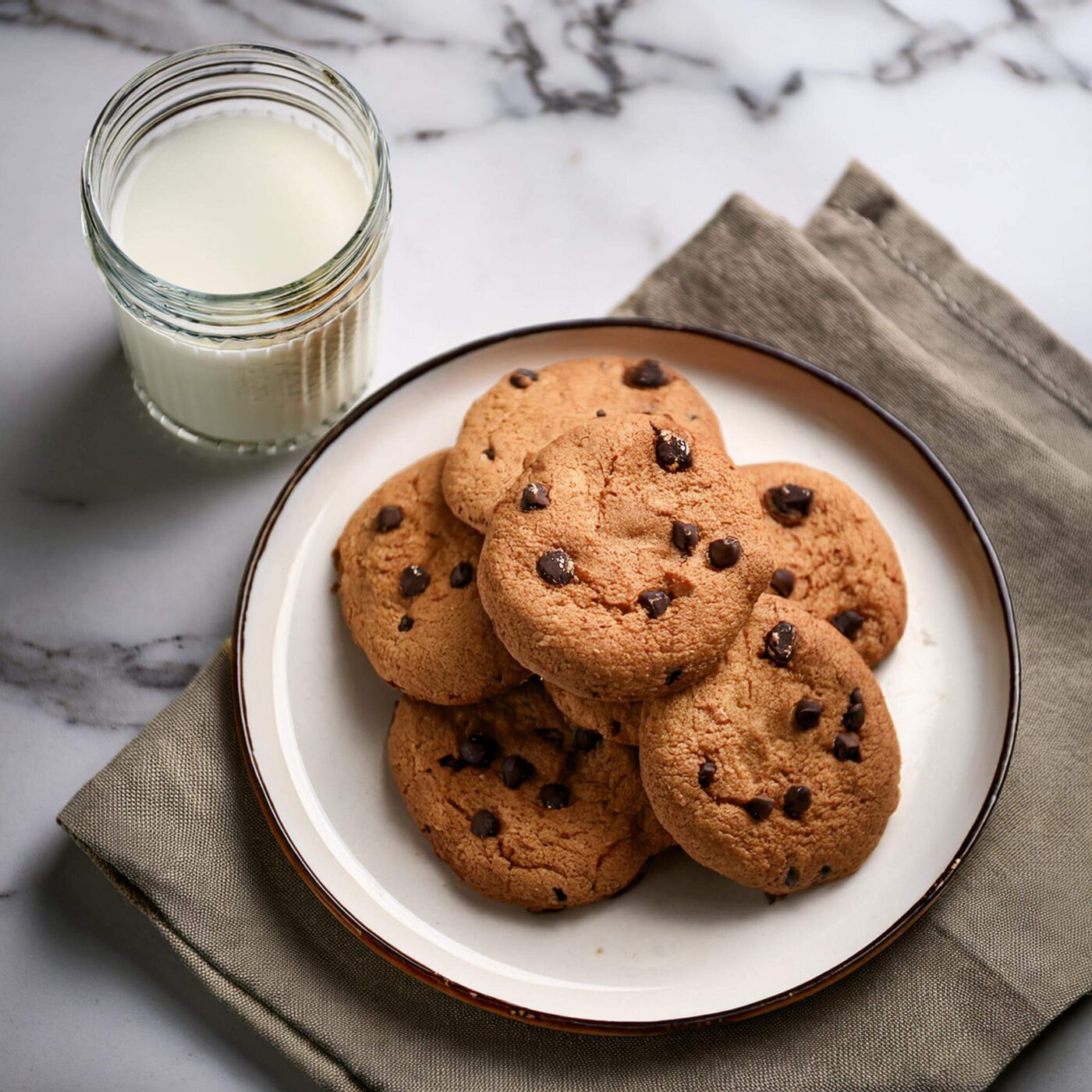
French Buttercream Macarons: The Ultimate Guide to Making These Luscious Treats
Macarons are delicate almond meringue cookies with a crisp shell and chewy interior. This recipe pairs them with rich and silky French buttercream, creating a luxurious treat. Follow these steps for perfect macarons with a decadent filling.
- Total Time: 48 minutes
- Yield: 20 1x
Ingredients
For the Macaron Shells:
- 1 cup (100g) almond flour
- 1 ½ cups (150g) powdered sugar
- 3 large egg whites (room temperature)
- ½ cup (100g) granulated sugar
- Food coloring (optional)
For the French Buttercream:
- 4 large egg yolks
- ¾ cup (150g) granulated sugar
- 3 tablespoons water
- 1 cup (226g) unsalted butter (room temperature, cut into cubes)
- 1 teaspoon vanilla extract (or any flavoring you love)
Tools You’ll Need:
- Stand mixer or electric hand mixer
- Piping bags with a round tip
- Baking sheets lined with parchment paper or silicone mats
- Candy thermometer
- Fine-mesh sieve
Instructions
- Prepare the Macaron Shells: Sift almond flour and powdered sugar together. Whip egg whites until frothy, gradually add sugar, and beat to stiff peaks. Fold in dry ingredients gently. Pipe small circles onto lined baking sheets, tap trays to release air bubbles, and let rest for 30-60 minutes until a skin forms. Bake at 300°F (150°C) for 15-18 minutes. Cool completely.
- Make the French Buttercream: Beat egg yolks until pale. Heat sugar and water to 240°F (115°C), then slowly pour into yolks while mixing. Beat until cool. Add butter one cube at a time and mix until smooth. Stir in vanilla.
- Assemble the Macarons: Pair shells by size, pipe buttercream onto one shell, and sandwich with another. Twist gently to secure.
Notes
Weigh ingredients for accuracy, allow macaron shells to rest before baking for proper “feet,” and ensure the butter is at room temperature for smooth buttercream, practice improves results.
- Prep Time: 30 minutes
- Cook Time: 18 minutes
- Category: Dessert
- Method: Baking
- Cuisine: French
- Diet: Vegetarian
Nutrition
- Serving Size: per macaron
- Calories: 120
- Sugar: 12g (approximate values).
- Sodium: 10mg (approximate values)
- Fat: 6g
- Carbohydrates: 14g
- Fiber: 0.5g
- Protein: 2g
- Cholesterol: 35mg
Keywords: macarons, French buttercream, almond cookies, baking, dessert, pastry, egg yolk frosting, meringue cookies, sweet treats, French cuisine
Macarons—delicate, fancy, and yes, a little intimidating. But here’s the thing: once you get the hang of it, making these beauties at home is not just doable, it’s downright satisfying. And if you’re ready to take your macaron game to the next level, filling them with French buttercream is the way to go. Think silky, rich, and melt-in-your-mouth perfection.
Want to make sure you nail every step? This guide will walk you through everything, from the almond meringue shells to the luscious French buttercream filling. Spoiler alert: it’s easier than you think if you follow the steps carefully. And while you’re perfecting your baking game, you might want to check out this detailed guide on Buttercream Macarons for more tips and tricks.
What Are French Buttercream Macarons?
Let’s start with the basics. Macarons are almond meringue cookies that are crisp on the outside and chewy on the inside. What makes them truly special, though, is the filling. Classic fillings like ganache or jam are lovely, but French buttercream adds a whole new level of decadence.
Unlike American buttercream, which uses powdered sugar, French buttercream is made with egg yolks and hot sugar syrup. The result? A rich, velvety filling that pairs perfectly with the light, airy shells. It’s the kind of filling that makes every bite feel luxurious.
Looking for more inspiration? This article on The Perfect Chocolate Chip Cookie also dives into achieving the perfect balance of textures in your desserts.
Why Choose French Buttercream?
Let’s talk about French Buttercream—the crème de la crème of frostings. If you’ve only ever worked with American buttercream, you’re in for a treat. This luxurious, silky creation takes your desserts to the next level, offering a texture and flavor that’s truly unforgettable. Here’s why it’s worth the little extra effort:
1. Smooth and Luxurious Texture
Think of French buttercream as the velvet dress of the frosting world—soft, smooth, and oh-so-elegant. It glides onto cakes and cookies with ease, leaving a professional-looking finish without any of the gritty texture you might find in other frostings. Whether you’re frosting a cake or piping onto macarons, this buttercream makes every dessert feel like a masterpiece.
2. Less Sweet, More Sophisticated
Let’s face it—American buttercream can sometimes feel like a sugar bomb. French buttercream, on the other hand, is all about balance. Its richness comes from the egg yolks and butter, not just sugar, giving it a more refined flavor that’s never overpowering. It perfectly complements the delicate sweetness of macarons or layers of a sponge cake without stealing the show.
3. Endless Flavor Possibilities
Here’s where things get really fun. French buttercream is like a blank canvas for flavor. Add a splash of pure vanilla for classic elegance, a shot of espresso for a bold coffee kick, or swirl in fruit puree for a burst of freshness. Feeling indulgent? Melt some high-quality chocolate and mix it in for a rich, decadent twist. The options are endless, and every variation feels like a whole new frosting adventure.
Why It’s Worth It
Sure, French buttercream takes a little more time to make, but the results speak for themselves. Its smooth texture, balanced sweetness, and incredible versatility make it a game-changer for anyone serious about their desserts. Once you try it, there’s no going back—it’s the frosting you’ll reach for again and again.
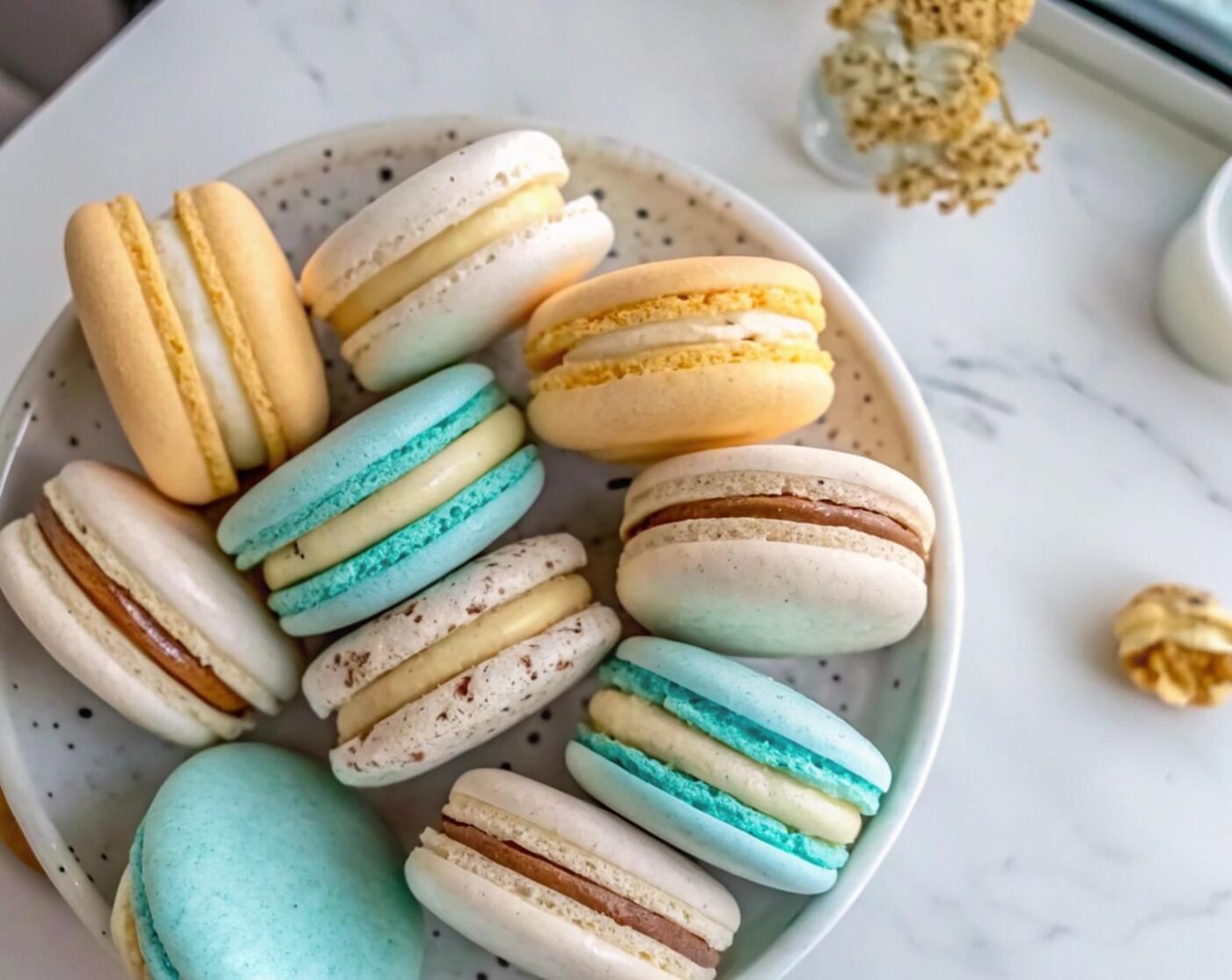
Ingredients for French Buttercream Macarons
Ready to get started? Here’s everything you need for the shells and that rich, dreamy buttercream.
For the Macaron Shells:
- 1 cup (100g) almond flour
- 1 ½ cups (150g) powdered sugar
- 3 large egg whites (room temperature)
- ½ cup (100g) granulated sugar
- Food coloring (optional)
For the French Buttercream:
- 4 large egg yolks
- ¾ cup (150g) granulated sugar
- 3 tablespoons water
- 1 cup (226g) unsalted butter (room temperature, cut into cubes)
- 1 teaspoon vanilla extract (or any flavoring you love)
Tools You’ll Need:
- Stand mixer or electric hand mixer
- Piping bags with a round tip
- Baking sheets lined with parchment paper or silicone mats
- Candy thermometer
- Fine-mesh sieve
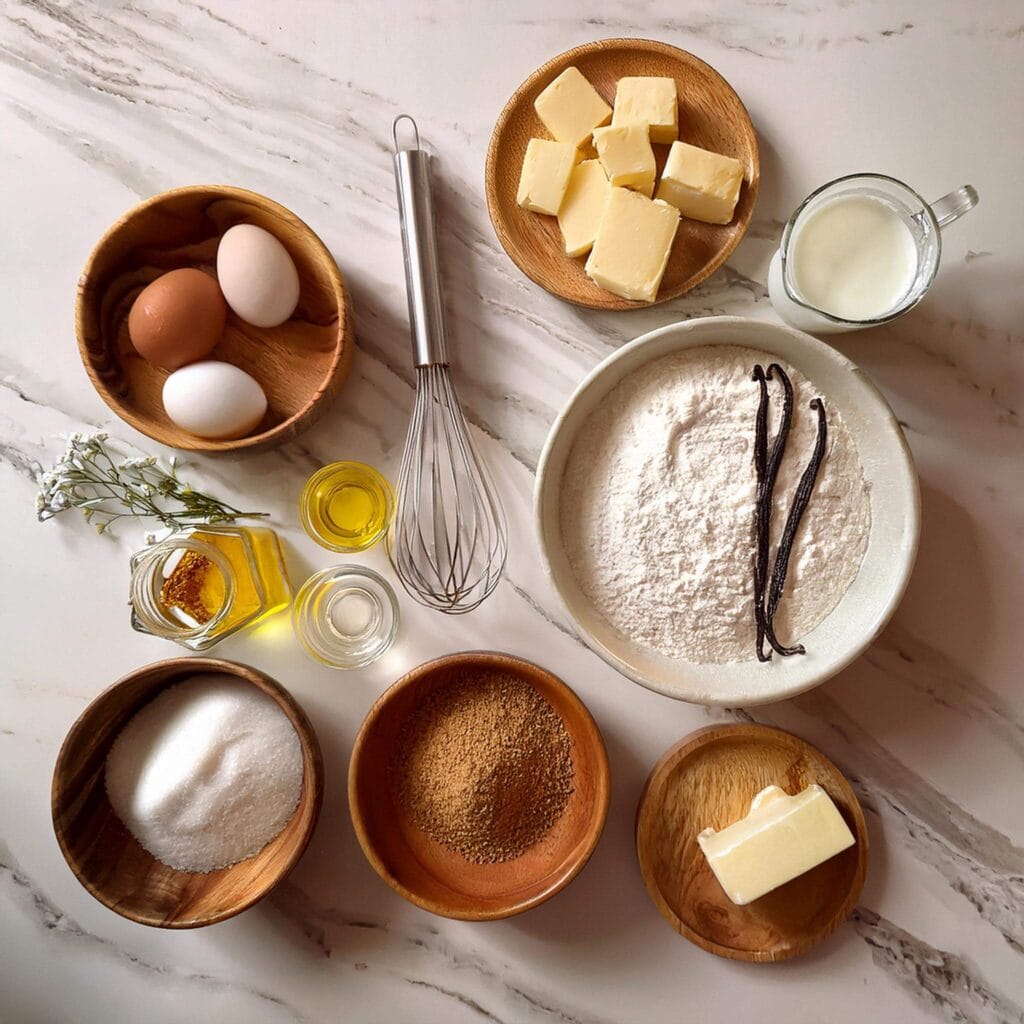
Preparing the Ingredients
Here’s a quick prep checklist:
- Separate the eggs carefully. You’ll need whites for the macaron shells and yolks for the buttercream.
- Bring the egg whites to room temperature for a fluffier meringue.
- Sift the almond flour and powdered sugar together to avoid lumps.
- Prepare a piping bag with a round tip for perfectly smooth shells.
Step-by-Step Instructions for French Buttercream Macarons
1: Make the Macaron Shells
- Whisk the Dry Ingredients: In a bowl, sift the almond flour and powdered sugar together. Set aside.
- Make the Meringue: In a clean bowl, whip the egg whites on medium speed until frothy. Gradually add the granulated sugar and keep beating until you get stiff, glossy peaks. If you’re using food coloring, add it here.
- Macaronage: Gently fold the dry ingredients into the meringue using a spatula. The batter should flow like thick lava—when you lift the spatula, the batter should form a ribbon that slowly melts back into itself.
- Pipe the Shells: Transfer the batter to a piping bag and pipe small circles onto the lined baking sheets. Tap the trays on the counter to release any air bubbles.
- Rest and Bake: Let the shells sit at room temperature for about 30-60 minutes, until they form a skin. Bake at 300°F (150°C) for 15-18 minutes. Let them cool completely before removing them from the trays.
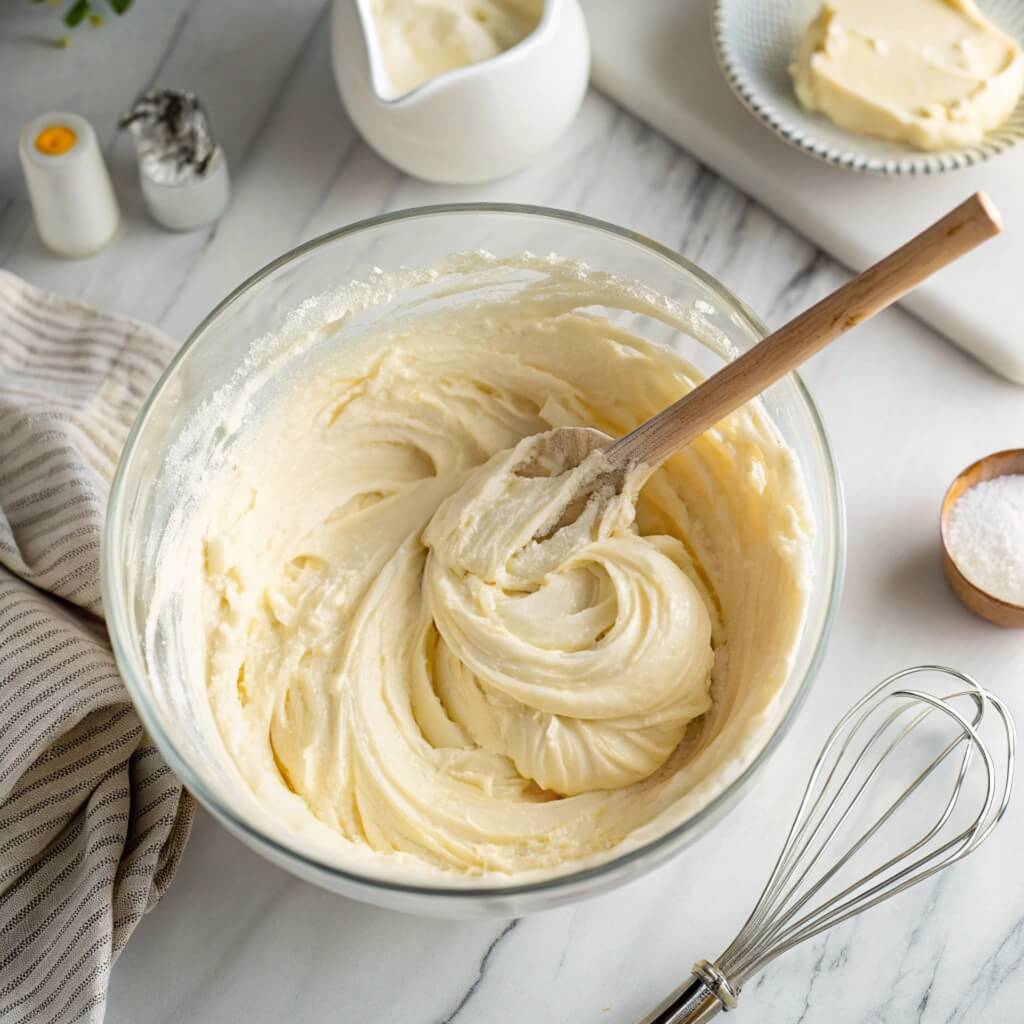
2: Make the French Buttercream
- Whip the Egg Yolks: In a heatproof bowl, beat the egg yolks with an electric mixer until pale and fluffy.
- Cook the Sugar Syrup: In a small saucepan, heat the sugar and water over medium heat. Use a candy thermometer and cook until the syrup reaches 240°F (115°C) (soft ball stage).
- Add the Syrup to the Yolks: With the mixer running, carefully pour the hot syrup into the yolks in a slow, steady stream. Keep beating until the mixture is cool to the touch.
- Add the Butter: Gradually add the softened butter, one cube at a time, until fully incorporated. Beat until the buttercream is smooth and fluffy. Mix in the vanilla extract.
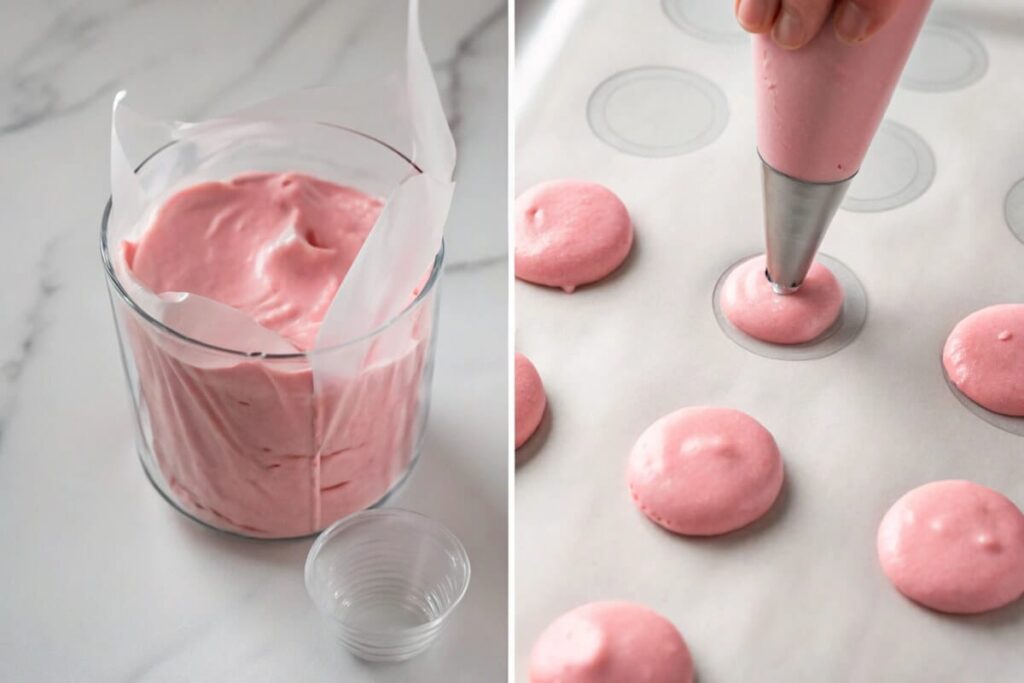
3: Assemble the Macarons
- Pair up the cooled macaron shells by size.
- Pipe a dollop of French buttercream onto the flat side of one shell.
- Sandwich it with the other shell, giving a gentle twist to secure the filling.
Pro Tips for Perfect French Buttercream Macarons
- Weigh your ingredients for accuracy. Macarons are finicky!
- Don’t skip the resting period for the shells. That skin helps them develop their signature “feet.”
- Make sure the butter is at room temperature for smooth French buttercream. Too cold, and it won’t blend properly.
- Practice makes perfect! Don’t get discouraged if your first batch isn’t flawless.
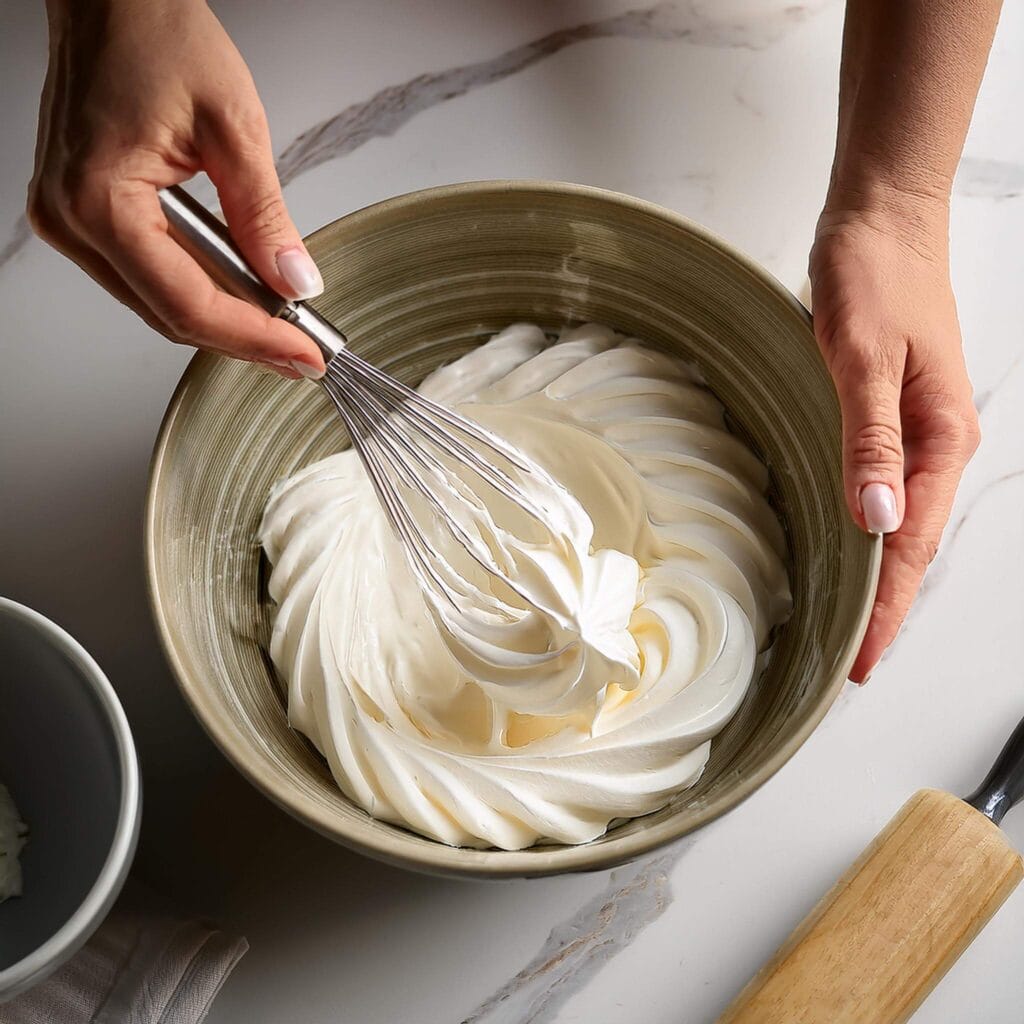

Nutrition Facts for French Buttercream Macarons
Here’s a quick look at the nutrition per macaron (approximately):
| Nutrient | Amount |
|---|---|
| Calories | 120 |
| Carbs | 14g |
| Protein | 2g |
| Fat | 6g |
| Sugar | 12g |
Note: These numbers are estimates, but hey—it’s a macaron, not a salad!
Serving Suggestions for French Buttercream Macarons
French buttercream macarons are like the little black dress of desserts—they’re elegant, versatile, and perfect for just about any occasion. Whether you’re hosting an intimate gathering or simply treating yourself to something special, these macarons add a touch of sophistication that’s hard to beat.
Where to Serve Them
- Afternoon Tea Parties: These delicate, bite-sized treats were practically made for tea. Pair them with a warm pot of Earl Grey or chamomile, and you’ve got yourself a picture-perfect spread.
- Dessert Tables at Weddings or Baby Showers: Looking for something classy to impress your guests? French buttercream macarons are a no-brainer. Stack them on a tiered tray or scatter them among other desserts for a stunning presentation.
- Gifting: Pop these macarons into a chic little box, tie it with a ribbon, and you’ve got an impressive homemade gift that screams thoughtfulness. (They’re perfect for birthdays, holidays, or just because.)
- Pairing with Coffee or Champagne: Whether it’s your morning latte or a celebratory glass of bubbly, these macarons are the ultimate sidekick. Go ahead, indulge a little—it’s worth it.
Healthier Alternatives for a Lighter Take
Want to enjoy your macarons with a little less guilt? No problem! Here are a few tweaks to make them a tad lighter without losing that signature flavor:
- Reduce the Sugar in the Buttercream: Cutting back on the sugar makes for a filling that’s less sweet but still perfectly balanced.
- Swap Butter for Greek Yogurt: Replace part of the butter with Greek yogurt for a tangy twist and fewer calories. Bonus—it adds a creamy texture that’s divine.
- Natural Food Coloring: Skip the artificial dyes and use natural alternatives like beet powder (for a pretty pink) or matcha (for a vibrant green). Not only do they look gorgeous, but they’re also free from artificial additives.
Other Sweet Recipes to Try
If you loved making French buttercream macarons, you’ll definitely want to give these recipes a go. They’re just as delightful and guaranteed to impress:
- The Best French Toast Recipe
- French Onion Soup Recipe
- Sun-Dried Tomato and Feta Stuffed French Toast
- Mini Pancake Pops
- Peanut Butter and Jelly Traybake Recipe
- Broccoli Cheddar Soup
FAQs About French Buttercream Macarons
Making French Buttercream Macarons can feel like an art (and, let’s be real, a little bit of science), but once you get the hang of it, it’s totally worth the effort. Here are some of the most common questions people have—and answers to help you nail this sweet treat every time.
1. Can I Freeze French Buttercream Macarons?
Absolutely! Macarons freeze beautifully, which means you can make them ahead of time and still serve them as if they’re freshly made. Here’s how to do it right:
- Place your macarons in a single layer in an airtight container. You can separate layers with parchment paper to prevent sticking.
- Pop the container in the freezer, where they’ll stay fresh for up to 3 months.
- When you’re ready to enjoy them, transfer the macarons to the fridge and let them thaw slowly overnight. This keeps their delicate texture intact.
Pro Tip: Avoid thawing them at room temperature, as condensation can mess with their pretty shells.
2. How Do I Know When My Meringue Is Ready?
The meringue is the backbone of your macarons, so getting it right is key. You’ll know it’s ready when it forms stiff peaks that hold their shape. What does that mean? When you lift the whisk out of the bowl, the meringue should stand tall and not droop over.
Signs of a Perfect Meringue:
- It’s glossy and smooth.
- It sticks to the bowl without sliding around.
- It feels stable but not overly dry when you touch it.
If your peaks are droopy or your meringue feels grainy, you might need to whisk it a bit more—or start over if things have gone too far.
3. Why Did My Macaron Shells Crack?
Oh no—cracked shells are such a bummer, but don’t worry, it’s a common hiccup. The good news is, it’s usually an easy fix once you figure out the cause.
Here are the two most likely culprits:
- Not Enough Resting Time: After piping your macarons onto the baking sheet, they need to sit for about 30-60 minutes (depending on your kitchen’s humidity). This lets a “skin” form on the surface, which prevents cracking in the oven.
- Oven Temperature Issues: If your oven runs too hot, the sudden burst of heat can cause cracks. Use an oven thermometer to check that your temperature is accurate, and consider baking at a slightly lower setting if cracks persist.
Pro Tip: If you’re short on time, resting them under a fan can speed up the drying process without compromising the results.
Conclusion
Let’s be honest—making French Buttercream Macarons might seem a little intimidating at first. But once you bite into that silky, buttery filling and the perfectly delicate shell, you’ll realize it was worth every step.
So don’t overthink it. Roll up your sleeves, grab those egg whites, and channel your inner pastry chef. The result? A plate of macarons is so good, that you might not even want to share. But hey, who’s judging? Happy baking!



